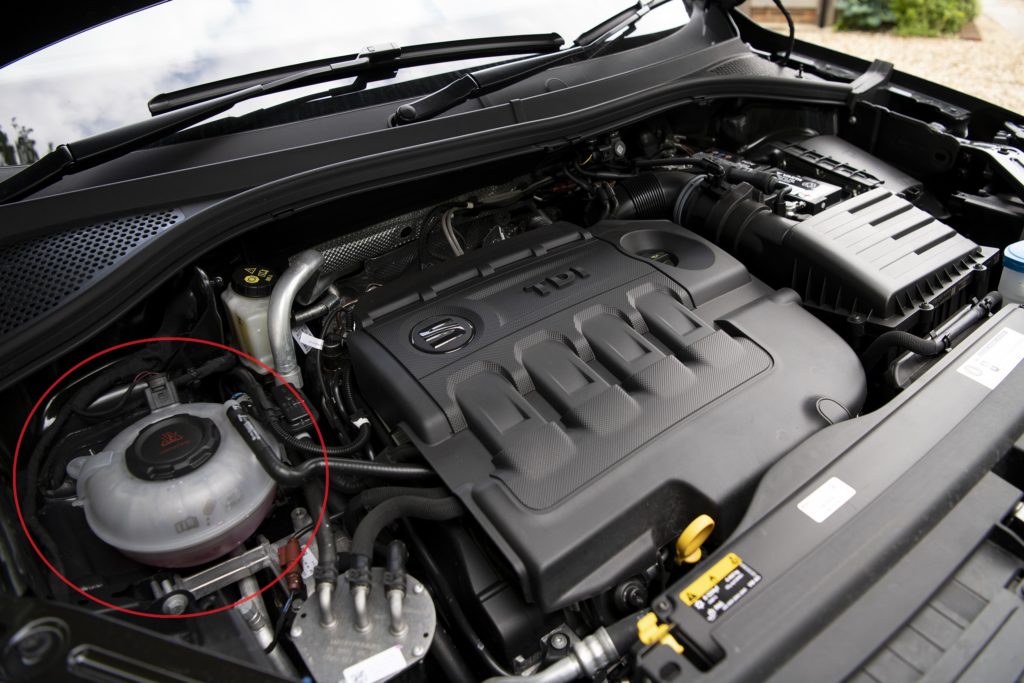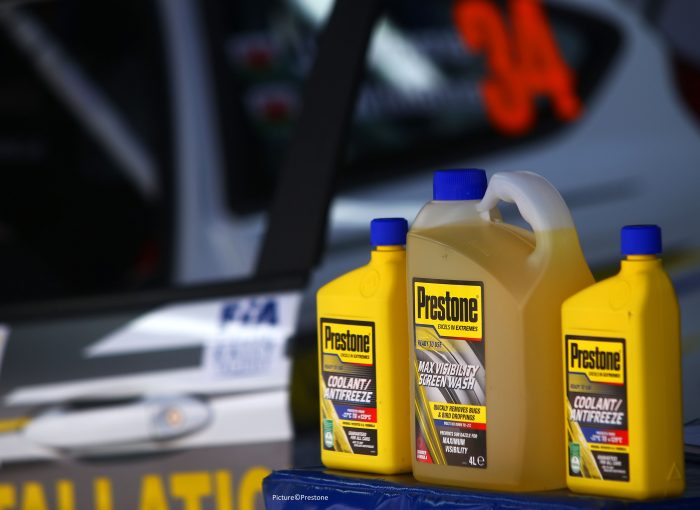It’s important to know which engine coolant for your car. Coolant is vital to keep your car running properly so it’s worth checking and if necessary topping it up regularly. And to do that, you need to choose the right coolant.
Table of Contents
What does coolant do? Is it the same as antifreeze?
Coolant is a mixture of distilled (purified) water and anti-freeze. The anti-freeze raises the water’s boiling point and lowers its freezing point. This helps keep your car cool in summer and stops the water freezing at low temperature.
Some coolants come pre-mixed, others come as a concentrate. It’s much cheaper to buy concentrates but you need to dilute them with distilled water. The concentrate’s bottle should give you an idea of the coolant/water ratio.

Does car coolant colour matter?
Your car’s water pump circulates coolant around the engine’s waterways to take the heat out and ensure components beneath the bonnet don’t get too hot.
The anti-freeze component of coolant is designed to slow down or ideally prevent corrosion within the engine so it’s important to buy the correct one. Anti-freeze is coloured with different dyes depending on which type of corrosion inhibitor they have so there are various types of coolant.
What are the colours of engine coolant?
- Green: Inorganic Additive Technology (IAT) – silicates
- Orange: Organic Acid Technology (OAT) – Organic acids
- Turquoise: Hybrid OAT (HOAT), phosphate free – NAP (nitrites, amines and phosphates) free
- Yellow: Hybrid OAT (HOAT) – silicates and organic acids
- Purple: Silicated HOAT (Si-OAT) – silicates and organic acids
- Blue or pink: Phosphated HOAT (P-HOAT) – phosphates and organic acids
One thing to be aware of: if your car’s engine coolant looks yellow, it might actually be orange. That’s why it’s important to check your car’s user manual.
Is there a difference between coolant colours?
All those HOATs and OATs can appear pretty daunting. Loosely speaking, cars built after 1998 require silicate-free organic acid technology (OAT) coolant. Those made before 1998 need silicates in their anti-freeze.
Does it matter what kind of coolant you put in your engine?
Yes. Which engine coolant for my car is one of the most important questions you can ask. But if you have a choice between the engine overheating and mixing coolant colours, you might have to mix them. But the coolant won’t function as efficiently because you’re effectively diluting different types.
What happens if you use the wrong coolant?
The different colours generally don’t blend well. They might even form a gel which will clog up your car’s cooling system and could cause water pump failure. If you do put the wrong colour coolant in, best to visit a garage as soon as you can to have your cooling system flushed out.
So which engine coolant for my car then?
Your vehicle manufacturer will have specified the correct coolant for your car engine’s needs. You will usually be able to find which engine coolant your car takes in its user manual.
Alternatively, go to a motor retailer but make sure you know the make, model and year of the car you want anti-freeze for. Or visit a website such as EuroCarParts which will explain what’s suitable for your car. Or you could go to a coolant manufacturer such as Total.
How do you check your engine coolant level?
Lift your bonnet and look for a white plastic tank, probably towards the back or side of the engine bay. It’ll have a coloured (probably blue) lid on it, usually with some cartoon steam embossed on it. On it there will be lines with ‘Min’ and ‘Max’ written by them. The coolant level should (and probably will) be between these lines.

What happens if your engine coolant level is low?
Engine coolant shouldn’t be low. The system is a sealed unit. Liquid may weep out and evaporate but you certainly shouldn’t have to top it up regularly. If it is low, you will have to refill it and take it to be checked over by a mechanic.
If there’s a sweet smell in the engine bay, that’s probably from coolant that’s leaked out.
How to top up your engine coolant
- Wait until the engine is cold. (If you release the lid of the expansion tank when it’s hot, you risk steam scalding you.)
- Professionals usually use a cloth to hold the coolant lid in case pressurised liquid escapes.
- We advise using a funnel to pour the coolant in so insert this into the open reservoir. Then look for the minimum and maximum markers on the reservoir. We’d top it up until the level is mid way between the two markers. To ensure you don’t overfill it, squat down so your eyeline is level with the reservoir.
- Screw the cap back on until you hear a click. And that should be that.
Can I put water in my coolant?
In an emergency, yes you can. But it’s not ideal because you’re diluting the properties of the anti-freeze. Ideally you want to put distilled water in rather than tap water because it has fewer impurities. But as above, any colour is better than none.
How to check your anti-freeze strength?
You don’t want the anti-freeze to become too diluted or it won’t work when you need it to in extreme cold. There are two ways to check it. You can either buy a tool from a motor retailer. It’ll cost around £7 and will tell you the strength of your car’s coolant mixture.
Alternatively take your car to a garage and they’ll check the anti-freeze strength for you. This should be a part of any winter check that you take your car in for.

I’ve been writing about cars and motoring for more than 25 years. My career started on a long-departed classic car weekly magazine called AutoClassic. I’ve since pitched up at Autosport, Auto Express, the News of the World, Sunday Times and most recently the Daily Telegraph. When I’m not writing about cars and motoring, I’m probably doing some kind of sport or working in my garden.







